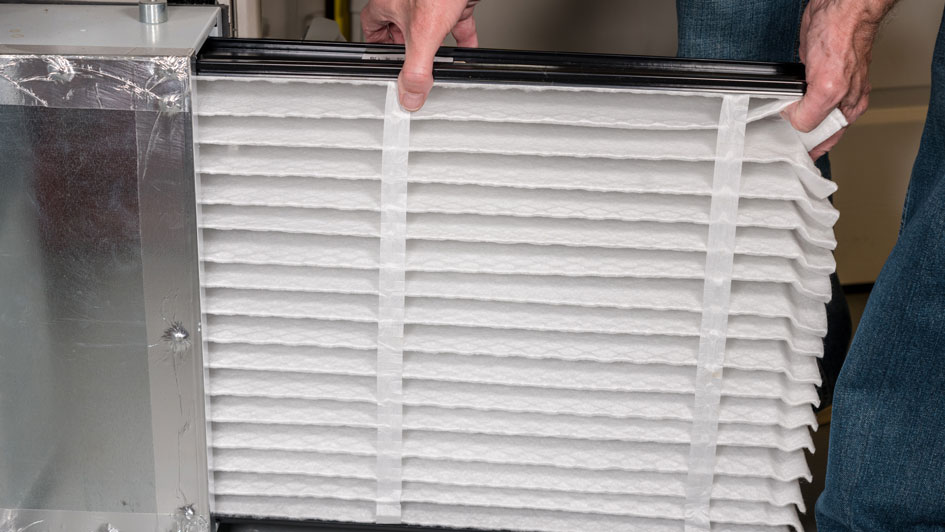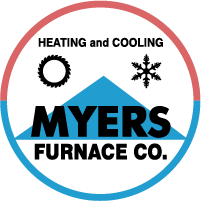
Selecting the right furnace filter and changing it when it becomes dirty is as important to your HVAC system as changing the oil is to your car. Each plays a crucial function in keeping its system running safely, efficiently and for a long time.
A clogged furnace filter loses its effectiveness, permitting potentially harmful particles to flow through your home. It also slows airflow, which can damage your furnace and decrease its life span.
Making sure your furnace uses a clean filter that is appropriate for your needs is not merely about keeping your furnace running efficiently. It’s also about delivering excellent indoor air quality for your household.
The health of your family is important to the heating and cooling professionals at Myers Furnace Company. We've long been dedicated to enhancing indoor air quality in Belton. Here, we’ve answered frequent questions about HVAC filters, including that very tricky question of what direction do you point a filter in your furnace or air conditioner?
When to Replace the Air Filter in Your Furnace
It is important to replace dirty air filters in a furnace or air conditioner periodically. Dirt-clogged filters cause the system to worker harder than it should because it takes more energy to pull air through the plugged-up filter.
Officials suggest checking your furnace filter monthly and replacing it if it’s dirty. You’ll know if your filter needs changing because it will coated with dirt or dust. Those who have pets will probably want to replace their furnace air filter more often, because a quality air filter will trap pet hair circulating in a home.
How to Find the Furnace's Air Filter
In general, a furnace air filter is normally installed in the return air duct or blower compartment before the return air goes back into the furnace. This is so air entering the system is filtered before it goes through the furnace components and is heated.
Depending on the type of furnace, the filter may be positioned on the right, left, bottom or in some cases, on the inside of the furnace. It's generally housed in a slot, frame or cabinet for convenient access and replacement. Always refer to your furnace's owner manual for facts about filter location of the furnace in your home.
Are Air Filters and Furnace Filters the Same Thing?
The straightforward answer is, yes. In HVAC, a furnace filter and an air filter or AC filter are essentially identical. While they might be called different things based on the current season— summer or winter—they are all filters that clean the air in your residence.
They each remove dust, allergens, bacteria and other contaminants from the air that is drawn into the furnace and air conditioning system, making sure the air flowing through your home is clean and safe.
What Are MERV Ratings and What Rating Is Best for Me?
Once you find your old furnace filter and figure out when it should be replaced, it’s time to choose a replacement. That means determining the level of filtration that you need. One approach to this is by choosing an appropriate MERV rating for your needs.
MERV is short for Minimum Efficiency Reporting Values. The MERV rating indicates the effectiveness of air filters at trapping airborne particles. The rating scale ranges from 1 to 20, with greater numbers indicating a greater ability to filter tinier particles.
Experts say a filter with a MERV rating between 8 and 13 offers an appropriate balance between having good indoor air quality without needlessly restricting airflow. However, people with specific health conditions could need to use a filter with a higher MERV rating.
Which Way to Put the Air Filter in a Furnace or AC Unit
Positioning an air filter in a furnace or air conditioner the proper way is crucial for the efficient operation of the unit. Air filters have a specific direction, indicated by an arrow written on the side of the filter frame. The filter should be put in with this arrow pointing in the direction of the furnace or air conditioning unit, which is the direction of the airflow. If you're unsure about the airflow direction, it may be helpful to remember that air always moves from the return duct to the heat or cooling source. Therefore, be sure that the arrow points at the furnace or air conditioner.
Many people are confused by which direction to install their system's air filter. To help remember, consider taking a quick picture with your mobile phone after the filter has been properly installed by a professional. Or, you also could ask a technician to use a marker to write on the outside of your furnace which direction the filter should be installed. A handy time to ask about this is during a regular furnace maintenance call.
How to Change a Furnace Air Filter
Switching out the filter on your furnace or air conditioning system is a simple process. Here is a step-by-step list of how to take out a dirty air filter and swap it for a new one:
- Turn off your furnace: Make a point to shut off your furnace before starting the process.
- Locate the furnace filter: Typically, the filter is located within the furnace or in the air return vent. Take note of which direction the arrow points on the filter, because you’ll want the arrow on the replacement filter to point similarly.
- Remove the old filter: Be mindful not to knock out any dust or debris.
- Note the date: Write down the date you replaced the filter on the new filter's frame. This will help your family keep track of when it's time for another replacement.
- Slide in new filter: Put in the new filter with the arrow pointing in the direction of the furnace, which is the direction of airflow and should be the same direction the arrow pointed on the old filter you are replacing.
- Secure the filter: Make sure the new filter fits nicely and close any latches or clips that secure it in the unit.
- Turn on your furnace: Once the clean filter is properly secured, you can turn your furnace back on.
Can a Dirty Air Filter Cause Problems for a Furnace?
The shortest answer is, yes, a dirty air filter can cause a furnace to cease working or reduce its lifespan. Changing your furnace or AC filter is one of the best things you can do to keep your system working effectively.
